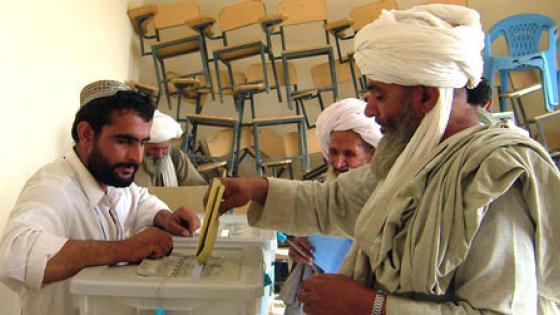The relationship between economic and political development has long been at the centre of political economy. In the last two decades, economists have intensified their interest in such questions and an enormous literature has emerged. Economists today seem to offer little support for the ‘modernization theory’ (Lipset 1959) view that economic development leads to democracy (Acemoglu et al. 2008, 2009). On the other hand, there is considerable support for the view that democracies perform better economically than non-democracies (e.g. Besley and Persson 2011, Acemoglu et al. 2014, 2019). In short, economists have established a new stylised fact. The relationship between democracy and income per capita is strong yet asymmetrical: democracy does cause economic growth, but the relationship the other way around does not have the same level and depth of econometric support. However, scepticism on the clear-cut growth benefits of democracy is still widespread. After all, China displayed a sustained economic boom under autocracy, while economic benefits of democratisations in Latin America, Northern Africa, or the former Soviet Union have been rather dubious.
Our central contention here is that this stylised fact uncovered by recent empirical analysis rests upon an overly crude definition of democracy (Campos et al. 2022). By overly crude we mean binary. Such choice fails to reflect work by political scientists. These have been preoccupied with the emergence of intermediate regimes, that is, of political regimes that are neither perfect democracies nor perfect autocracies. For instance, Diamond (2002) refers to these as 'hybrid’ regimes, while Epstein et al. (2006) and Fearon (2011) call them ‘partial democracies’. In spite of the high degree of heterogeneity of intermediate regimes, they share the common characteristics of having elections taking place in a weak institutional framework. These regimes typically arise from transitions out of autocracies, which lead to political competition through elections. In such a context, elites compete to capture the state and channel resources to their own benefits (Campos and Coricelli 2009). However, and more relevant in recent times, such intermediate regimes may also arise from a backsliding of democratic regimes.
Recent economic theory has been attentive to this continuum of political regimes (e.g. Mukand and Rodrik 2015, 2020, Acemoglu and Robinson 2022). These models characterise intermediate regimes by their relatively higher levels of instability. The rationale is that instability entails myopic behaviour aimed at grabbing rents in the short term and disregarding long-term outcomes. Political instability is considered the key theoretical channel linking democracy and income.
Even a simple specification in which GDP per capita is regressed on continuous measures of democracy (from V-DEM and Polity) and their squared terms reveals that intermediate regimes generate worse economic outcomes (Figure 1).
Our main hypothesis is summarised by the idea of a ‘Political U’ and we find supporting evidence that the causal relationship between political and economic development is U-shaped (Campos et al. 2022). Specifically, we show that the economic performance of ‘intermediate’ regimes is significantly inferior to that of both ‘democracies’ and ‘autocracies’. Econometric results show that the U-shaped relationship between political and economic development is robust to different model specifications, econometric techniques, and definitions of democracy. Moreover, differently from the literature, we find social unrest and political instability to be the main channels.
Figure 1 Predicted values of GDP per capita for different continuous democracy indexes
Note: The figures on the left show only the conditional means and their confidence intervals, while the ones on the right add the overall predictions and their 95% confidence intervals.
The idea of a non-linear relationship between income and democracy is not completely new to economists. Colagrossi et al. (2020) review 188 papers (from which they take more than 2000 estimates) and find that democracy has a positive and direct effect on economic growth. More importantly, they find that the possibility of a non-linear relationship between income and democracy is investigated in only 10% of the papers in this literature. They also report these non-linear effects are seldom statistically significant.
Although recent economic theory is attentive to a continuum of political regimes, most empirical papers in economics still favour binary indicators of democracy. Concerns about measurement error are commonly used to justify the dummy variable approach to political regimes. The bulk of the literature uses the Polity index (Colagrossi et al. 2020). Here we argue that the new Varieties of Democracy (V-DEM) dataset brings substantial improvements to the measurement of political regimes (Lührmann et al. 2018). Differently from Polity, V-DEM provides direct measures of ‘electoral democracy’ as the key dimension of democracy (Polity confounds this with other dimensions) thus requiring less manipulation than Polity, making replication more straightforward.
Irrespective of which data source we use as measure of democracy, we find that both the V-DEM and the Polity indexes relate to per capita income in similar ways, namely, they both support a non-linear U-shaped relationship between political and economic development.
We find that the ‘Political U’ is quantitatively important: we estimate that (stable) autocracies achieve about 20% higher GDP per capita than an ‘intermediate regime’ in the long run while democracies achieve a similar 20% higher long-run GDP per capita. Our estimate is in line with those in Acemoglu et al. (2019) based on a binary democracy indicator.
The Political U is a simple idea, and its most powerful potential criticism is, we think, equally simple: what if dictators lie? What if autocrats are more likely to systematically manipulate GDP figures? Even compared to concerns about endogeneity, outliers, estimator choice, measurement of democracy, and cross-time heterogeneity (all of which we address), we think this is potentially the most severe criticism. In a recent paper, Martinez (2022) argues that dictators systematically lie about GDP figures and estimates that “autocracies overstate yearly GDP growth by approximately 35%.” We deal with this issue by using night lights instead of GDP and show that our results are equally supportive of the Political U hypothesis.
As for the potential mechanisms that explain the non-monotonic relationship between democracy and income, we show these effects are mainly driven by political instability (or social unrest). Other important potential mechanisms, such as education, investment, inequality, and reforms, seem to lack comparable empirical support. For instance, Eberhardt (2019) argues that “the relationship between the democratic dividend and initial levels of literacy (as a proxy for human capital) appears to follow a U-shape.”
We believe the Political U has important research and policy implications. On the research side, it brings together political scientists and economists. It also helps in light of the facts that the economic costs of populism have been more difficult to identify econometrically than its social and institutional costs (Guriev and Papaioannou 2022). The Political U provides a fresh economic rationale not only against countries willing to experiment with democratic backsliding (apparently the case of, among others, the US and Italy recently) but also justifies the report voted by the European Parliament (2022) that consider Hungary a ‘hybrid electoral autocracy’ with the important financial consequences this decision entails.
References
Acemoglu, D, S Johnson, J A Robinson and P Yared (2008), “Income and Democracy”, American Economic Review 98(3): 808–42.
Acemoglu, D, S Johnson, J Robinson and P Yared (2009), “Reevaluating the Modernization Hypothesis”, Journal of Monetary Economics 56: 1043–1058.
Acemoglu, D, S Naidu, P Restrepo and J A Robinson (2014), “Democracy Causes Economic Development?”,VoxEU.org, 9 May.
Acemoglu, D, S Naidu, P Restrepo and J A Robinson (2019), “Democracy does Cause Growth”, Journal of Political Economy 127(1): 47–100.
Acemoglu, D and J A Robinson (2022), “Weak, Despotic, or Inclusive? How State Type Emerges from State versus Civil Society Competition”, American Political Science Review, forthcoming.
Besley, T J and T Persson (2011), Pillars of Prosperity: The Political Economics of Development Clusters, Princeton University Press.
Campos, N and F Coricelli (2009), “Financial liberalisation and democracy”, VoxEU.org, 6 August.
Campos, N, F Coricelli and M. Frigerio (2022), “The Political U: New Evidence on the Relationship between Income and Democracy”, CEPR Discussion Paper 17551.
Colagrossi, M, D Rossignoli and M A Maggioni (2020), “Does democracy cause growth? A meta-analysis (of 2000 regressions)”, European Journal of Political Economy 61, 101824.
Diamond, L (2002), “Elections without Democracy: Thinking about hybrid regimes”, Journal of Democracy 13(2): 21–35.
Eberhardt, M (2019), “Revisiting the Causal Effect of Democracy on Long-run Development”, VoxEU.org, 28 April.
Epstein, D L, R Bates, J Goldstone, I Kristensen and S O'Halloran (2006), “Democratic Transitions”, American Journal of Political Science 50(3): 551–569.
European Parliament (2022), “MEPs: Hungary can no Longer be Considered a Full Democracy”, Press Releases Plenary session LIBE.
Fearon, J D (2011), “Self-enforcing Democracy”, Quarterly Journal of Economics 126(4): 1661–1708.
Guriev, S and E Papaioannou (2022), “The Political Economy of Populism”, Journal of Economic Literature 60(3): 753-832.
Lipset, S (1959), “Some Social Requisites of Democracy”, American Political Science Review 53(1): 69–105.
Lührmann, A, M Tannenberg and S I Lindberg (2018), “Regimes of the World (RoW): Opening New Avenues for the Comparative Study of Political Regimes”, Politics & Governance 6(1): 60–77.
Martinez, L (2022), “How Much Should We Trust the Dictator’s GDP Growth Estimates?”, Journal of Political Economy, forthcoming.
Mukand, S W and D Rodrik (2015), “Political Economy of Liberal Democracy”, VoxEU.org, 29 September.
Mukand, S W and D Rodrik (2020), “The Political Economy of Liberal Democracy”, Economic Journal 130(627): 765–792.





